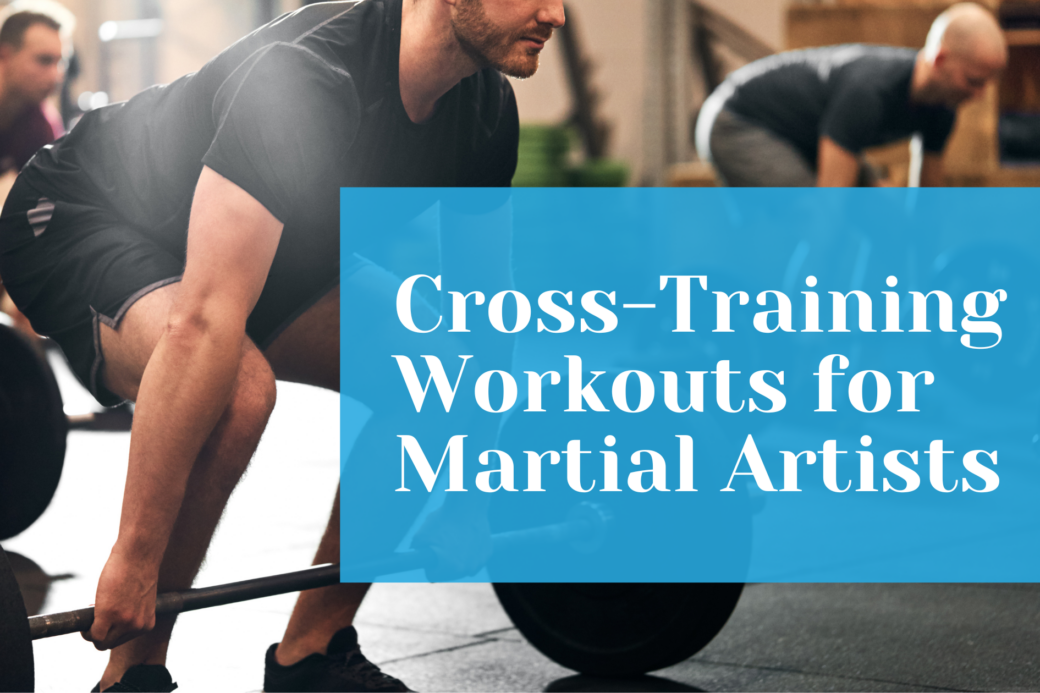Top 10 Cross-Training Workouts for Martial Artists

Practicing martial arts is a great way to build physical skills, develop a deeper mental focus, and promote athletic growth. While practicing your chosen martial art is absolutely essential to reach mastery, all martial artists can benefit from cross-training in other sports or workout modalities.
Cross training can improve overall fitness, develop complementary skills, and lend a fresh perspective to your practice. Looking for ideas? Here are our top 10 cross-training suggestions to help you get started.
Running
Running is a tried-and-true cross-training workout for martial artists across countless disciplines, and for good reason. Running improves cardiovascular fitness, leg strength, and muscular endurance. For martial artists who compete, running is usually an important component of their competition prep. The ability to maintain exertion over time, such as fighting in a ring or controlling an opponent in a grappling match, is a critical attribute for most martial arts disciplines; running is one of the best ways to develop that skill.
Strength Training
Functional strength is essential to all sports and athletic pursuits. Strength training helps martial artists increase their output, improve muscle tissue, and reduce the risk of injury. Some modalities of strength training include free weights (barbells and dumbbells), kettlebells, bands, weight machines, and using bodyweight. Just 30 minutes of strength training twice per week can deliver results!
Rock Climbing
Climbing has long been a favorite cross-training activity for grapplers, as it helps develop incredible grip strength, mobility, and functional fitness. The movements involved in rock climbing also tend to focus on the posterior chain or “pulling” movements. This can serve as a natural complement to many martial arts, which are often dominant in “pushing” movements.
Swimming
Lap swimming is a no-impact, full-body exercise that develops muscular endurance and cardiovascular fitness. Swimming also requires you to breathe in rhythm with your movements, a skill that is very similar to the more explosive rhythmic breathwork found especially in striking sports like boxing and Muay Thai.
Yoga
Similar to swimming, yoga also focuses on breathwork and breath-to-movement rhythms, although usually at a much slower pace. In addition to developing these mindful breathing skills, yoga can also improve flexibility, aid recovery, and help manage stress levels.
Pilates
This one might surprise you… Joseph Pilates, the founder of the Pilates method, was a boxer! In addition to training, competing, and coaching in the sport of boxing, Joseph Pilates also studied high level boxers when developing his method. Traditional Pilates series, such as the mat Pilates sequence, are extremely valuable complements to a martial arts training routine. This training style combines strength, mobility, flexibility, and breathwork to produce a superior level of core strength and physical control.
Cycling
Whether riding the road or on a stationary bike, cycling is an excellent way to improve cardiovascular fitness and leg strength while reducing impact. Cycling is also highly customizable to individual preferences and training needs, making it a relatively accessible choice for athletes of all levels and abilities.
Hiking
In addition to getting outside and enjoying some beautiful scenery, hiking can help develop physical adaptability and responsiveness, particularly if the terrain is a little challenging. For example, hiking a steep or uneven route can improve lower body strength and core stability while offering a fun and challenging workout. Plus, don’t forget about the countless mental and physical health benefits of outdoor exercise!
Dance
There are endless styles of dance, just like martial arts! Although martial arts and dance may seem worlds apart from an outside perspective, they’re more closely related than you might expect. Kicking, twisting, turning, rolling, and precise coordination skills are highly important in both martial arts and dance. Martial artists can benefit from a dance-focused cross-training workout in many ways – and dancers can also benefit from a martial arts workout!
Other Martial Arts
If you’re looking for perspective on your martial arts practice, try venturing into a different martial art entirely. Other martial arts may offer new philosophies, training modalities, and insights that you can apply to your chosen practice. For example, Muay Thai strikers may find that training Brazilian jiu-jitsu helps them develop a more nuanced clinch style. With such a wide variety of martial arts to try, exploring different styles can certainly help keep things fresh.
Leave a Comment